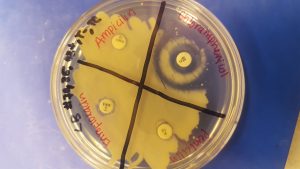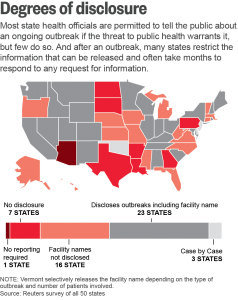For many years, efforts to profile the antibiotic resistome of the human gut focused exclusively on two extremes of human society: Western, industrialized cities and remote hunter-gatherers. While these studies were undoubtedly important, they overlooked the majority of the world’s population, which exists somewhere between the two extremes. Indeed, three-quarters of the world’s population lives …
There is an increasing number of studies with a large number genomes recovered from isolate, metagenome, or single cell sequencing. To bridge the gap between the available genome sequences and available phenotype information, we have developed Traitar, a bioinformatics software to phenotype bacteria based on their genome sequence (see workflow below) . Traitar includes phenotype models for …
Vague rules give healthcare providers leeway in deciding when, or even whether, to report clusters of infections. And when they do, the public rarely knows. This is a really really big deal. We desperately need to be more open about antibiotic resistant bugs and any outbreaks of them. Kudos to Reuters and Deborah J. Nelson, David Rohde, …
Since this was the last week of the quarter, we didn’t require the students to blog as in the previous 9 weeks. Also, mostly we recapped what had happened in the class and discussed various assignments. But the students did measure the antibiotic resistance of their strains, and we also had a powerful demonstration of …
(This blog post was prepared by students enrolled in the Koala Poop Microbiome Class in the Fall of 2016 at UC Davis) This week we focused on antibiotic sensitivity on the individual bacteria that were identified last week. The day before class, the bacteria that we have been working with all quarter were recultured in …
Microbes found in ambulances Not surprisingly, bacteria could be detected after swabbing surfaces in ambulances. Detection and characterization of surface microbial contamination in emergency ambulances – Aketza Varona-Barquin – American Journal of Infection Control ($35.95) A cross-sectional study was performed in 10 emergency basic life support ambulances operating in Bilbao, Spain, to assess surface bacterial …
Microbes indoors Effects of Microbial Aerosol in Poultry House on Meat Ducks’ Immune Function – Guanliu Yu – Frontiers in Microbiology (OA) The aim of this study was to evaluate effects of microbial aerosols on immune function of ducks and shed light on the establishment of microbial aerosol concentration standards for poultry. A total of 1800 …
This recently published closed access paper by Sancheza, et al claims that levels of antibiotic resistance genes and antibiotic resistant bacteria are higher in outdoor air samples downwind of conventional cattle farms compared to organic cattle farms as shown with 3 different methods. This comes as little surprise, as it wasn’t until December 2013 that the …
Microbes in the city Also see this blog post earlier this week: Urban Transit System Microbial Communities Differ by Surface Type and Interaction with Humans and the Environment – Tiffany Hsu – mSystems (OA) Public transit systems are ideal for studying the urban microbiome and interindividual community transfer. In this study, we used 16S amplicon and …
As posted in this blog last week, an article was published in the ASM Journal Antimicrobial Agents and Chemotherapy on May 26 that describes the first discovery in the United States of mcr-1 gene, responsible for colistin resistance, in E. coli in a patient with a urinary tract infection. Colistin is considered an antibiotic of last resort because, …




